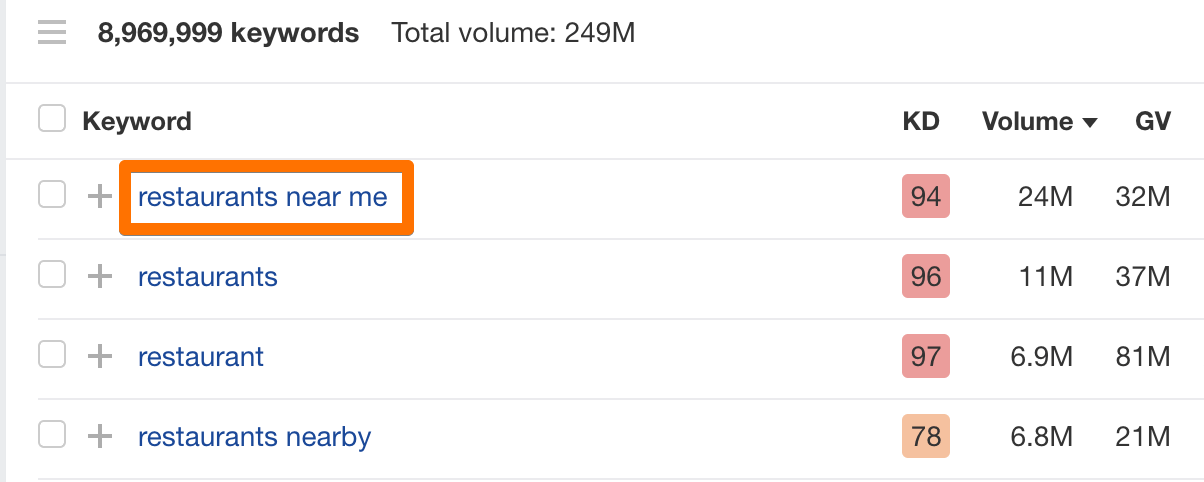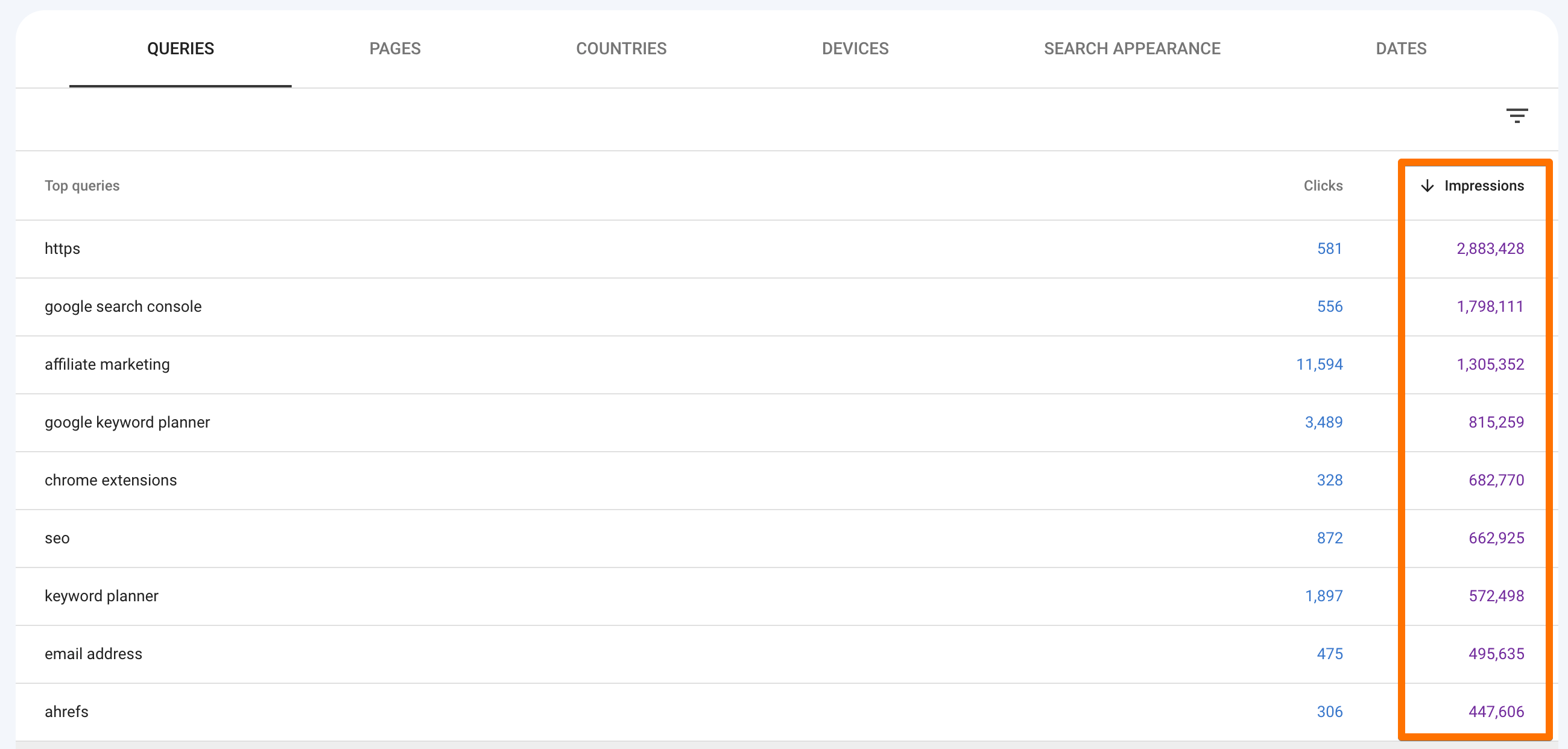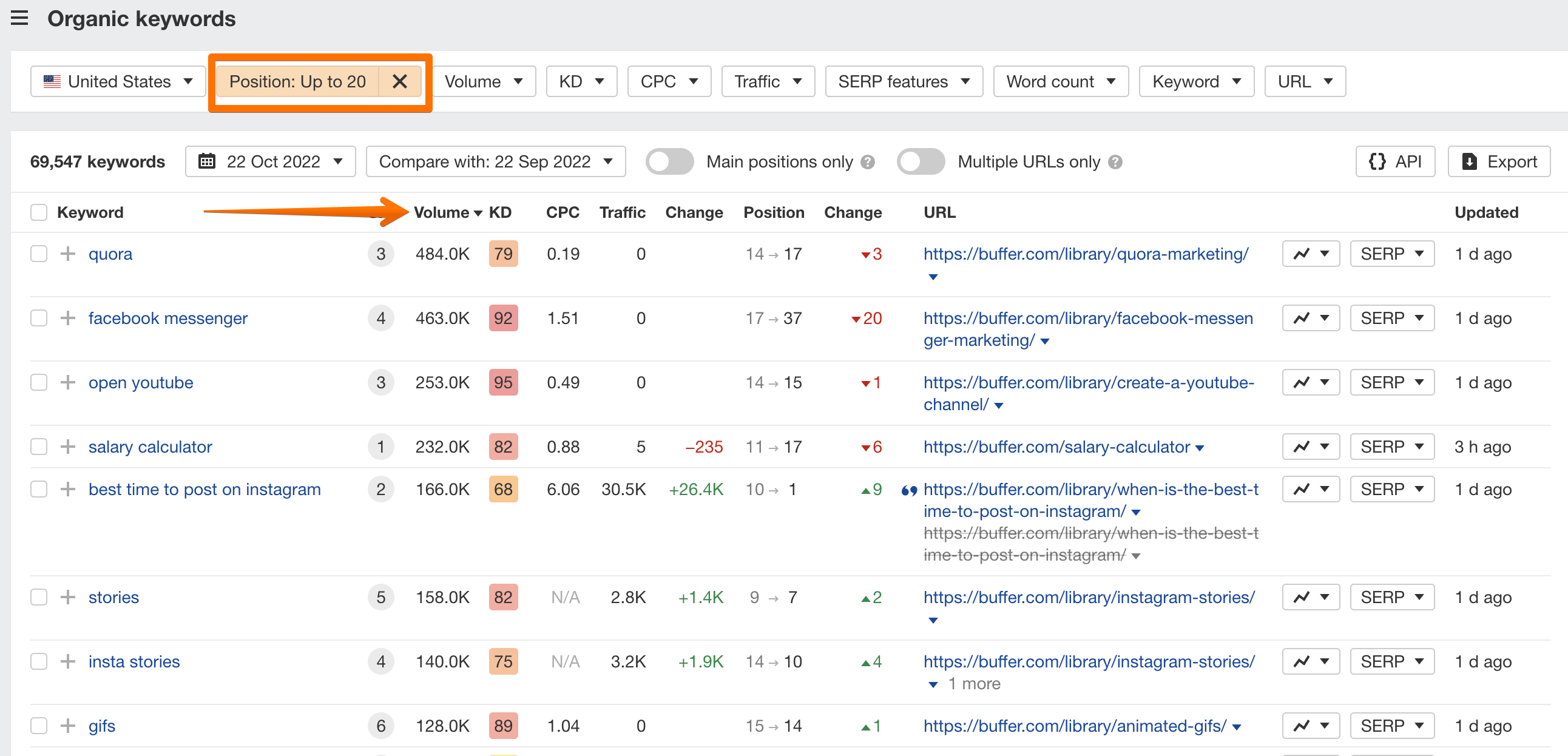Short-Tail Keywords
What are Short-Tail Keywords?
Short-tail keywords—also known as head terms—are search queries that refer to very broad topics and have high search volumes. It’s the opposite term for long-tail keywords, which are more specific and typically have low search volume.
“Short-tail” and “long-tail” keywords get their name from their position in the “search demand” curve.

At the head of the curve (on the left), there are only a few thousand queries (precisely 31,000 as per Ahrefs’ U.S. database) that get a very high number of searches per month, i.e., more than 100k.
But as you go towards the right side, the number of keywords runs into millions and billions while the monthly search volume shrinks. So, it looks like a long tail in the “search demand” curve.
That’s how the term “long-tail keywords” was coined to address queries that have lower search demand. And eventually, people started referring to head terms as “short-tail keywords”—the opposite of long-tail search queries.
You may find many articles that define short-tail keywords as search terms containing one or two words. However, that’s not the most accurate definition because there are queries with three, four, or five words that have huge monthly search volumes.
For example, “restaurants near me” has a much higher search volume than “restaurants” and “restaurant.”

So the terms “short-tail” and “long-tail” have nothing to do with the keyword length.
Why are short-tail keywords important?
Short-tail keywords are essential for keyword research because they’re used as “seed” keywords. The seed keywords are the foundation of keyword research that help you generate thousands of keyword ideas.
And if you manage to rank for short-tail keywords, you can get a large amount of organic search traffic. But it’s extremely complicated to rank for these popular search queries unless your site has a strong backlink profile and topical authority.
Moreover, short-tail keywords are usually expensive and competitive in Pay-Per-Click (PPC) ads too.
Also, note that ranking for high search volume keywords may not always result in huge traffic to your site.
Take the search query “calculator” for instance.
Keywords Explorer shows a 16 million search volume for this query in the U.S. But the search results are getting very few clicks because Google provides a calculator to searchers right there on the SERP.

These days Google has many SERP features that basically “steal” clicks from the ranking results.
Sure, it saves searchers’ time, but websites end up with less traffic.
How to find short-tail keywords?
Now, it’s important to be able to find short-tail keywords during keyword research.
1. Check your short-tail terms in GSC
First, you should check the seed keywords for your own website—provided you’re already getting some traffic from Google.
Here’s how to do it:
- Log into your Google Search Console (GSC) account.
- Go to Performance on the side panel.
- Click Queries and sort the list by the number of impressions.

You’ll get the list of high-search-volume keywords your site ranks for (but not necessarily getting traffic from).
This method is not perfect, but it’s a good place to start if you haven’t invested in any keyword research tools.
You can also use the Organic Keywords report in the free Ahrefs Webmaster Tools (AWT) to get a similar list.
2. See what keywords your competitors rank for
With GSC or free AWT, you can only check the ranking keywords of your own site (or any site for which you can verify ownership in GSC).
But if you have access to the right SEO tools like Ahrefs, you can easily find the head keywords that your competitors rank for.
Let’s say, you’re a SaaS business that offers social media management tools and buffer.com is your competitor.
Open the Organic Keywords report for this domain, sort the list by the search volume, and limit raking positions to 1-20 (to exclude less relevant results).

Similarly, you can find out the short-tail keywords of other top websites in your niche—especially the competitors that are performing well on search engines.
FAQs
Should I target long-tail or short-tail keywords?
Usually, the short-tail keywords are extremely competitive. So if you don’t have a strong, well-established site in your niche, you’ll have to invest a lot of resources to rank for these keywords.
That said, if you’re just starting out or have a new website without any niche authority, it’s best to start with long-tail phrases and eventually move to mid-tail keywords.
What are mid-tail keywords?
Mid-tail or medium-tail keywords are the queries with a moderate amount of search volume and competition. Simply put, their search volumes are neither as high as head terms nor as low as long-tail keywords.
What are long-tail keywords?
Long-tail keywords are the terms that get a low amount of searches as compared to short-tail and mid-tail keywords. Also, they’re very specific search queries with lower competition.